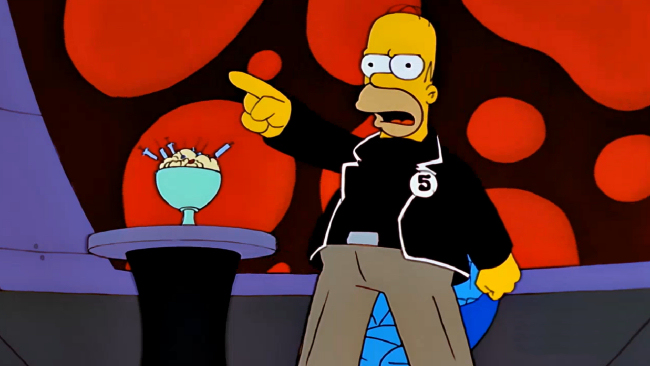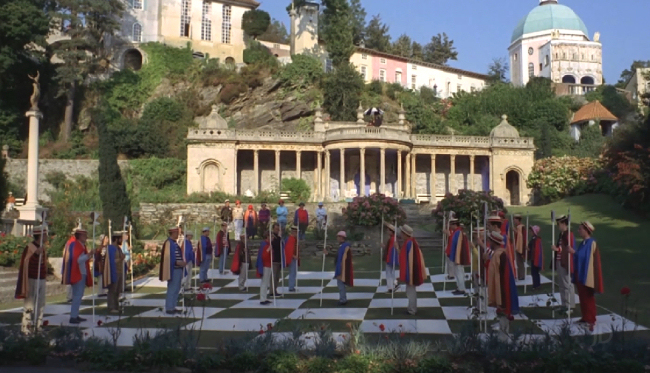In April 2020 I posted a review of the 1957 Rank film "High Tide at Noon". I admitted that it wasn't totally my type of movie, and only watched it for Patrick McGoohan, who played the character of Simon Breck.
Now, many female McGoohan fans absolutely LOVE him in this film, if not for his bad-boy character, then for his youthful looks.
It is also one of the very few times he kissed a woman on-screen (though I still argue we don't see any lip contact... but I digress...). In fact, there is speculation that Simon actually rapes the main character, Joanna MacKenzie, played by Betta St. John. In the interviews released on the DVD "In My Mind", McGoohan even states he "practically rapes" the girl in the film.
The first scene it could have happened during is when Joanna meets Simon in the old abandoned house. At first she lets him kiss her, then things get more "serious" and she suddenly changes her mind. Joanna runs away and Simon watches her go.
The other time it could have happened is when Simon visits the same house, now fixed up and Joanna's home, after her husband Alec has died. Simon thinks he again has a chance to "win" Joanna, who hates him and tries to get him to go away. Things start to get heated, when the scene just plain ends.
Next, we see Joanna run to her parent's house and Nils heads to the Breck household to settle things. Simon implies he isn't looking for trouble with Nils, who goes for him anyway. They make for the docks, get into their fishing boats, and Simon disappears into the night. Nils shouts out to him that he'll kill him if he ever returns to the island.
So, what happened at Joanna's house after we, the audience, left? Did Simon indeed rape her, like so many viewers think?
I decided to find out once and for all. How? Easy. Look at the original book.
"High Tide at Noon" was written in 1944 by Elisabeth Ogilvie and
actually based on the
I readily admit I can't STAND reading non-fiction, so reading the entire story would be a chore. Instead, I logged onto Archive.org and borrowed the book. I did a search for "Simon" to narrow the pages down a bit. What I discovered was a bit surprising!
-----------------------------------------------------------------------------------------------------------------------------------------------------------------------
Firstly, in the film, Joanna's family name is MacKenzie . In the book, it is Bennett. Simon Breck's family name isn't Breck in the book, it is Bird. His physical description is very similar to that of McGoohan himself at the time, other than the "smoky gray eyes":
"He had a thin,
tanned face and flat cheeks slanting to a lean chin... his red hair was like
copper with the sun on it, and he was slight and narrow hipped in his snug
dungarees".
The scene where Joanna meets Simon at the abandoned house is also mostly the same, BUT with some important exceptions, one being Simon's touching her breast to see if her heart is also racing. That would be a no-no on 1957 movie screens. In the film, he instead says "so's yours... I bet...".
But one big difference is how Simon reacts to Joanna suddenly wanting him to stop making love to her. He had been rather nice to her up to that point, just like in the film. Simon says "you gotta learn some time", and she runs away. But in the book, he starts to get mad. He gives her 5 minutes to think about it and basically implies she better give in to him. She doesn't, and runs away. In the movie, he almost seems to find it all humorous. In the book, he's mad as Hell. She lead him on by being coy by his boat, agreed to meet him that night, allowed him to hold and kiss her, and then suddenly "pulls the salt water business" on him:
"I'll give you five minutes to get the hell over it, and then you'll listen to reason. I don't let anybody fool with me, lady. Sooner or later, they pay up".
In the film, we get the impression Joanna hates Simon just for the passes he has made to her. Anything he or his family may have done to the MacKenzies seems secondary. Simon is a sort of pest, not much else.
But in the book, it is far more complicated and intense. Joanna's family basically owns the island, and the Birds are looked down upon as "trash". It is part of the reason Simon takes her physical rejection of him to the point of utter hatred. She has become "uppity", as he says in the film. Did she lead him on then reject him because she thinks she is better than anyone from the Breck (Bird) family?
Simon gets his hands (and lips) on her way more in the book, even after she spurns him. And she hates it more as well. He is nastier, dirtier, meaner.
The scene at the dance, which ends in a melee, is almost exactly like the book.
But the next one, in the now fixed up house, after Alec's death, is far more "meaty" in the book. The fact he has Alec's IOU for her house is more important. Also more important is the Breck family's tampering of other fishermen's gear, and Simon's interactions with Nils.
In the film, Simon is run off the island for good by Nils just after the scene with Joanna at the house. He hasn't even had a chance to find out about Alec's IOU. In the book, time passes before Simon leaves the island, and he isn't exactly chased by Nils, though Nils is indeed waiting at the Bird house to "settle" things with him. In time, the family does indeed pay Alec's debt to Simon (via a lawyer).
There are other differences between the book and film, such as Joanna having a baby after Alec dies. I didn't look much at sections not dealing with the Simon character. So curious viewers of the film will have to read those themselves.
But now we know... Simon did NOT rape Joanna in either the film or book "High Tide at Noon".
... UNLESS that is exactly WHY the last scene in Joanna's house ends the way it does, and WHY Nils runs Simon off the island right away.
Sticking to the book would have made the film even longer, and given McGoohan, a young newcomer to the Big Screen, a far meatier and more important role. In hindsight, a real missed opportunity. We all know he could play mean, nasty, and angry. All the kissing and pawing may have been an issue but he managed to get through it all during those Rank years. And the fact the character Joanna had the same name as his real life wife, Joan... well... every little bit helps!
In the end, it all comes down to the old argument: THE BOOK or THE MOVIE!














































